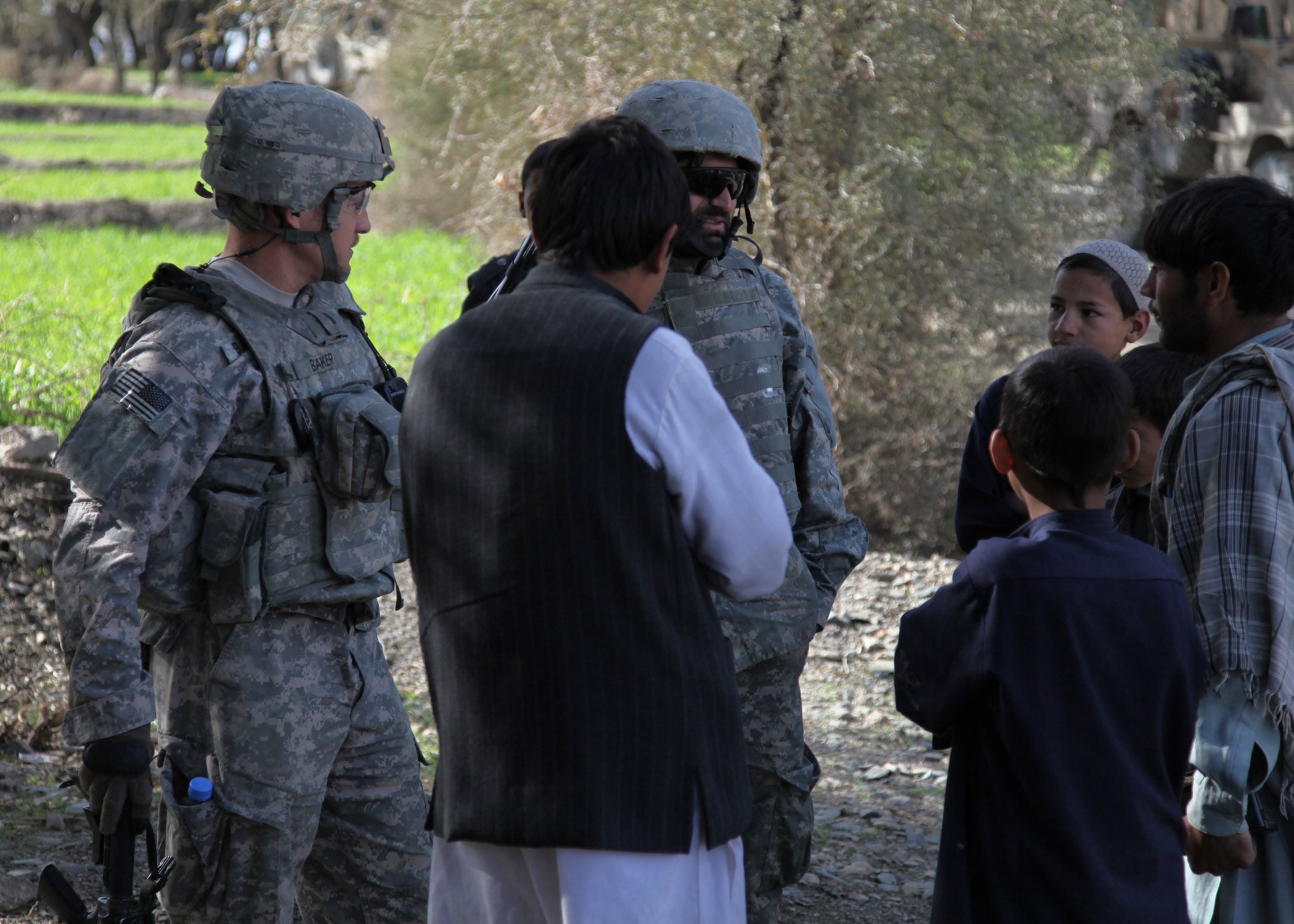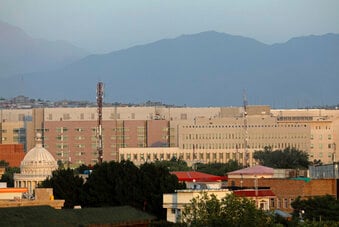Three infantry battalions are on their way to the Kabul airport, the Defense Department announced Thursday, as the State Department moves to evacuate civilians from its embassy there.
At the same time, Pentagon spokesman John Kirby told reporters, another 1,000 troops are headed to Qatar to help process special immigrant visas for Afghan interpreters, while an entire infantry brigade combat team will set up in Kuwait as an on-call reaction force, as the Taliban advances its campaign to take provincial capitals around the country.
“I want to stress that these forces are being deployed to support the orderly and safe reduction of personnel, at the request of the State Department, and to facilitate an accelerated process of working through SIV applicants,” Kirby said. “This is a temporary mission with a narrow focus.”
The battalions, two Marine and one Army, are expected to arrive at the Kabul airport within the next 24 to 48 hours, Kirby said. He would not provide details on which units or where they are based, only that they are already foward-deployed to CENTCOM.
They will report to Rear Adm. Peter Vasely, who heads up U.S. Forces Afghanistan Forward, the follow-on mission after the end of Operation Resolute Support.
Within days, 1,000 soldiers and airmen will arrive in Qatar, one of the proposed third-country partners for processing SIVs, to help with medical screenings and other steps in the process, in an effort to expedite the approval of thousands of applications.
And within the next week, an 82nd Airborne Division brigade will head to Kuwait as a back-up force to protect the airport, Kirby added, though he declined to specific which one.
Forces would join with 650 troops still on the ground in Kabul, as part of a long-term security contingent for the U.S. embassy. Though U.S. Central Command has declined to specify how many troops are still in Afghanistan, the deadline to withdraw the last 2,500 train-advise-assist and counter-terror troops comes at the end of August.
The emergency security mission is not expected to extend that deadline, Kirby said. The move, however, raises questions as to how a drawdown of 2,500 so quickly turned into a surge of at least 3,000.
“Once this mission is over ― I won’t get into specific numbers here ― but we anticipate having less than 1,000 troops on the ground to support the diplomatic mission in Kabul, which we all agree we still want to be able to have,” Kirby said.
RELATED

The move suggests a lack of confidence by the Biden administration in the Afghan government’s ability to provide sufficient diplomatic security in the capital as the Taliban mount an offensive that has rapidly conquered key cities in recent days.
Afghan government forces are collapsing even faster than U.S. military leaders thought possible just a few months ago when President Joe Biden ordered a full withdrawal.
The Taliban, who ruled the country from 1996 until U.S. forces invaded after the 9/11 attacks, captured three more provincial capitals Wednesday and another two on Thursday, the 10th and 11th the insurgents have taken in a weeklong sweep that has given them effective control of about two-thirds of the country. The insurgents have no air force and are outnumbered by U.S.-trained Afghan defense forces, but they have captured territory, including the country’s third-largest city, Herat, with stunning speed.
In a new warning to Americans in Afghanistan, the second it has issued since Saturday, the embassy in Kabul on Thursday again urged U.S. citizens to leave immediately. The advisory was released amid increasing discussions in Washington about further reducing already limited staff at the embassy.
The U.S. continues to support the Afghan military with limited airstrikes, but those have not made a strategic difference thus far and are scheduled to end when the U.S. formally ends its role in the war on Aug. 31. Biden could continue airstrikes beyond that date, but given his firm stance on ending the war, that seems unlikely.
The most recent American military assessment, taking into account the Taliban’s latest gains, says Kabul could be under insurgent pressure by September and that the country could fall entirely to Taliban control within a couple of months, according to a defense official who discussed the internal analysis Wednesday on condition of anonymity.
Military officials watching the deteriorating situation said that so far the Taliban haven’t taken steps to threaten Kabul. But it isn’t clear if the Taliban will wait until they have gained control of the bulk of the country before attempting to seize the capital.
The security of the U.S. diplomatic corps has been talked about for months, even before the Taliban’s battlefield blitz. The military has long had various planning options for evacuating personnel from Afghanistan. Those options would largely be determined by the White House and the State Department.
A key component of the options would be whether the U.S. military would have unfettered access to the Kabul international airport, allowing personnel to be flown systematically out of the capital. In a grimmer environment, American forces might have to fight their way in and out if the Taliban have infiltrated the city.
Associated Press writer Lolita C. Baldor contributed to this report.
Meghann Myers is the Pentagon bureau chief at Military Times. She covers operations, policy, personnel, leadership and other issues affecting service members.




